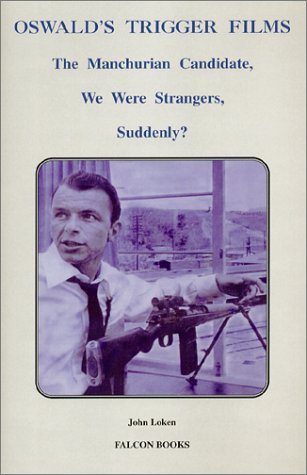Items related to Oswald's Trigger Films: The Manchurian Candidate,...

"synopsis" may belong to another edition of this title.
While the book is very focused on its copycat case, its presentation is neatly chronological and includes much background information about the assassination. It therefore serves well both as a specialist study and as a general introduction to the tragedy for any readers unfamiliar with it. Given the large number of wild conspiracy theories still proposed in the field today, this sober yet fresh analysis should be greatly appreciated. Anyone who has ever imitated a specific word, gesture, fashion, or action from a movie should understand the validity of the copycat case.
Of course, some people will deny the strength of the case made in Oswald's Trigger Films. Two noteworthy examples have already made themselves known: Prof. Louis Menand, a book and film reviewer for the New Yorker, and R. Hoberman, a prolific film scholar and film reviewer for the Village Voice.
Professor Menand, writing about The Manchurian Candidate in a September 15, 2003 article (available on-line) in the New Yorker, mentions Oswald's Trigger Films at length, but finally expresses skepticism about its copycat case with regard to The Manchurian Candidate: "What self-respecting assassin [Oswald] would take such a [brainwashed] character for his role model?" But Menand's objection is weak, and comes from a reviewer who loves movies and clearly does not wish any movies implicated in President Kennedy's assassination. The facts are these: Oswald was not yet an assassin, self-respecting or otherwise, before he become well aware of The Manchurian Candidate in late 1962. Nor did he own any guns at that time. He was also an impressionable young man (just 23), prone to copying other people (e.g., his brother Robert). Moreover, the brainwashed movie assassin, Raymond, is a moody loner, who, however, is portrayed as sympathetic and in the end even heroic - precisely through his act of assassination. What an obvious role model for Oswald after all.
Hoberman, writing a review (accessible on-line) of the new film version of The Manchurian Candidate in the U.K. newspaper The Guardian on October 30, 2004, likewise alluded to Oswald's Trigger Films in skeptical terms. He wrote: "There's no proof that Oswald ever saw or even heard of The Manchurian Candidate." The first part of Hoberman's statement, "... no proof that Oswald ever saw....," is correct, but is very misleading, because the second part is completely incorrect. There are indeed abundant proofs that Oswald was massively aware of The Manchurian Candidate in late 1962. Those proofs are documented at length in Oswald's Trigger Films, which Hoberman had presumably read, however superficially, since he alludes to its author. To deny that Oswald was even aware of the film betrays a certain desperation on Hoberman's part, similar to that of Menand. Maybe the only proof that Hoberman would accept is a signed statement by Oswald that he knew of the film. Moreover, those many proofs that Oswald was indeed aware of the film certainly also constitute evidence - not proof, admittedly, but evidence - that he may very well have gone to see the film, too. Even if he did not see it, his reading knowledge of its plot line, including assassinations with pistol and rifle, can only have encouraged him - and perhaps originally inspired him.
Since the 1970s, the copycat phenomenon has been abundantly documented as a significant psychological factor in many instances of youthful violence. Oswald's act, so similar in detail (rifle, window) to that of The Manchurian Candidate, and so similar in purpose (Cuba) to that of We Were Strangers, should now be included among such instances, despite entrenched denials by Hollywood and its loyalists.
"About this title" may belong to another edition of this title.
- PublisherFalcon Books
- Publication date2000
- ISBN 10 0964889730
- ISBN 13 9780964889736
- BindingPaperback
- Number of pages81
(No Available Copies)
Search Books: Create a WantIf you know the book but cannot find it on AbeBooks, we can automatically search for it on your behalf as new inventory is added. If it is added to AbeBooks by one of our member booksellers, we will notify you!
Create a Want